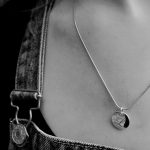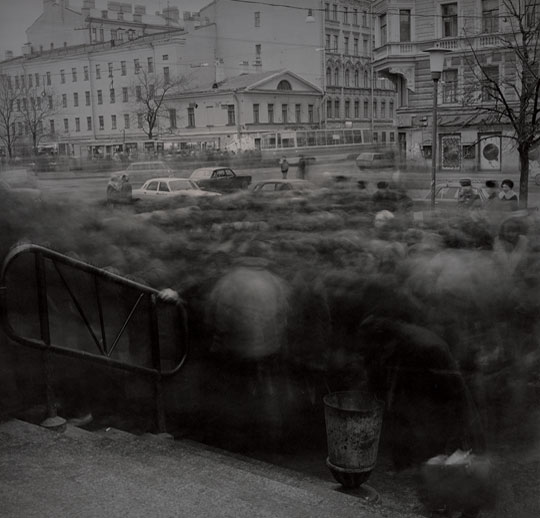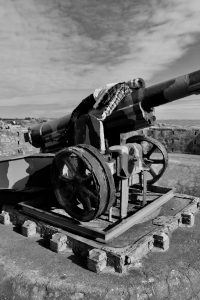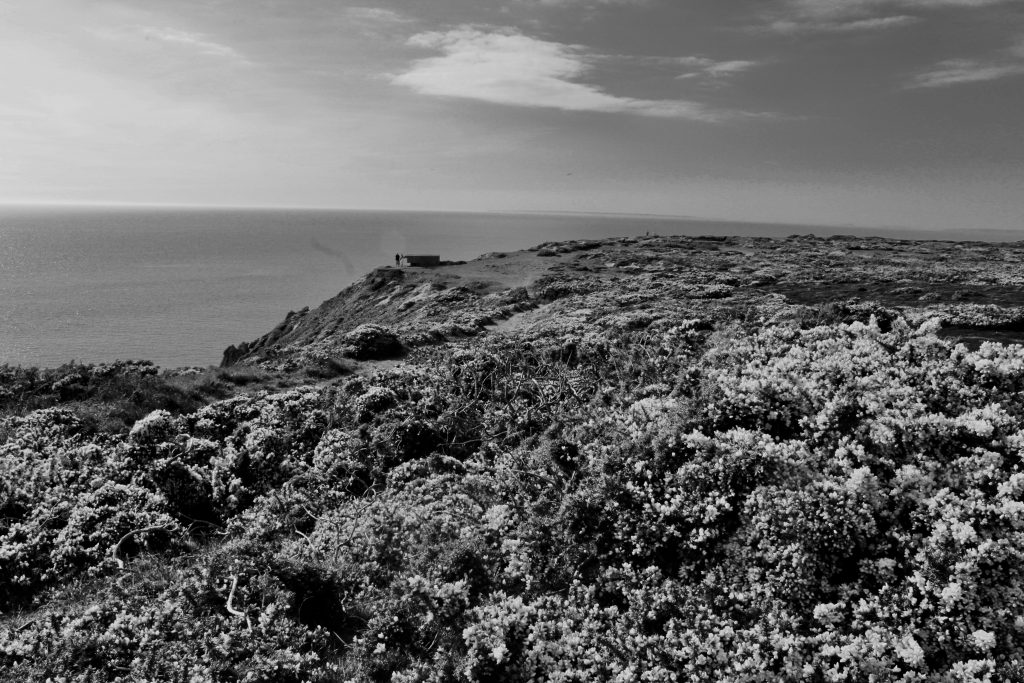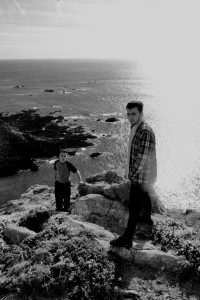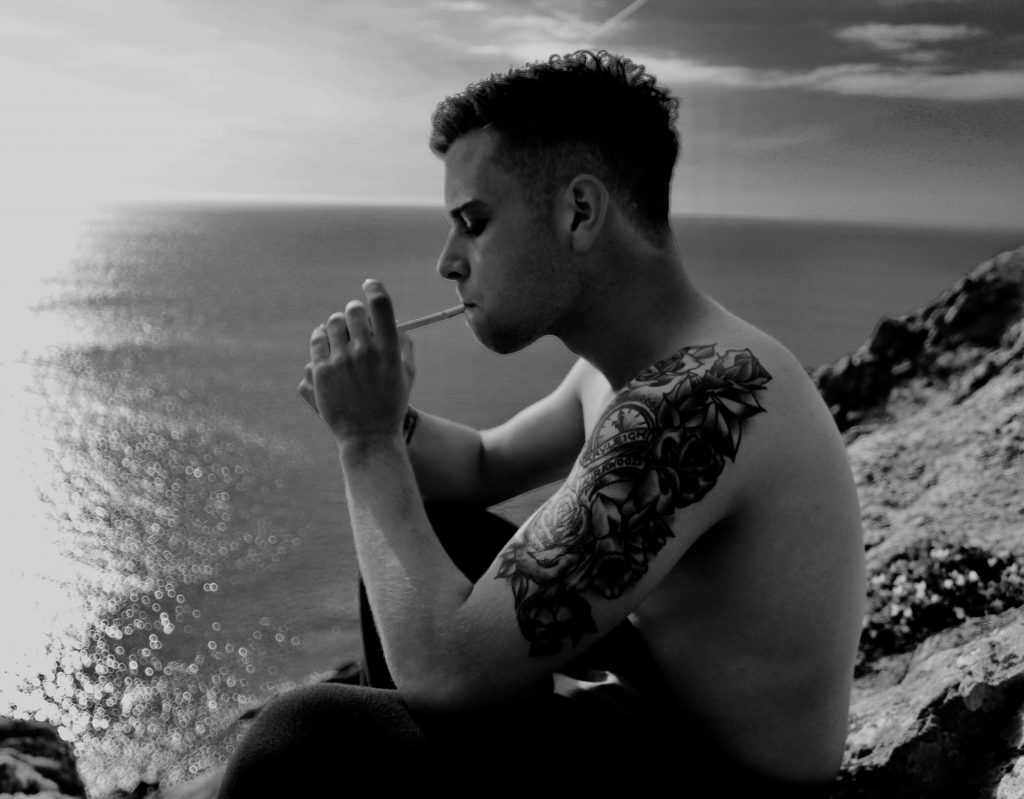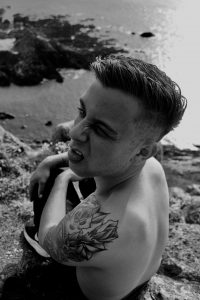Clare Rae is the latest photographer to be in Jersey working with the Jersey Archive in order to inform her artistic practice. Her current body of work is inspired by the photographer Claude Cahun and as she lived and produced work in Jersey we have extensive material in the Island on her. Clare Rae is a photographer who explores performance within her practice and therefore i thought she would be a really significant photographer to consider within my project. The process of building my dens is a performance for the camera as i am creating something to be recorded by the camera. I think more significantly my movement photographs are going to be capturing a blurred impression of a performance and therefore i wanted to consider how a performance can be captured within a space. I went to a workshop and talk given by Clare Rae which really really intriguing to consider the nature of performance photography and what exactly that means.
Clare Rae is an artist based in Melbourne, Australia. She has created many body’s of work, starting from her time at university. I really like how when she was talking about each project she mentioned how they all link together. She began creating work for one reason and then everything she learnt from that project and the inspiration for that project then inform her next body of work and so on. It really conveyed to me how an artistic practice and style of work can grow to become your own unique style as you as a person grow and evolve forward. I think its actually quite hard to define the exact “overview” of Rae’s photography. Her work is basically to go into a space and interject her own body within this environment doing a movement which becomes a performance. She interestingly spoke at the talk about how she only ever uses herself within her work. This stems back to her research on feminist theory at university and how she doesn’t want to impose what she is doing on another person so as to speak for them. She feels that by photographing herself she can convey the message that she wants and is not making someone else conform to the message she wants to present. This links directly to the main concept of all her bodies of work which is representation. She uses performance and the photographing of gestures to present her own body and her experiences of it. Another reason that Clare uses herself within her work is because of this consideration of the smallest, authentic gestures. It is amazing that none of her photographs have a rigid nature to them, as if the movement is anything but spontaneous and Rae believes this comes from the lack of direction. She knows sort of the movement she is going to make and the pose it will take but when the photograph comes to being taken doesn’t need to consider creating a pose someone has told her to. This is because being both subject and photographer she can translate her concept within her head into her photograph without over analysising being asked to do something very specific. I really love her work for this lack of rigidness to the movements. At the talk Rae was asked about her photographic process in creating her bodies of work. She spoke about how she chooses her locations very carefully to consider light and also space. Her early work in particular explores domestic spaces. Once she has chosen her space Rae then goes to the location to consider the composition of her photograph. She considers what is available within the space to use as a part of her performance and then will take test shots of the lighting and composition to make sure the photograph is going to work. She doesn’t however create the movement until the day that she is actually taking the photograph. This is another way in which she avoids the rigid movements of pre-planned actions as the exact movement while it is considered is not tried out. Rae can then take up to 100 photographs of that same movement on shooting day and will then consider them to find the best movement.
Rae’s most recent work explore producing work within a specific location and then having her work displayed in this location.
One of Rae’s more recent bodies of work was “NGV” which explores the difference between the public and private spaces of the National Gallery of Victoria. In these photographs like all her other’s Rae interjects her body within the space to capture her movement and the form of her body. This work stood out to me to consider as it was her first work which explored a space which wasn’t domesticated in some sense. I think it also really reflects the possibilities of surroundings, which seems to be another key element of her work. To go to a space which is both public and private and then to create movements which would never normally be associated with that space suggests what you can do within a place is not limited to what is expected for you to do. In a public gallery you would never normally hang from the stair case but then what really stops you from doing this? I think Rae’s photographs explore an alternative to how you can treat your surroundings and interact with them as much as to show the representation of self. I think the fact that many of her poses are completely frozen, almost in suspension of a moment, in the sense that she is hanging and so eventually will come down or balanced on objects which will eventually fall over creates a real tension in her photographs. You look at the images and consider not just the position Rae is in but also how they got to this point and the eventuality of it falling apart.
When speaking about this body of work at the talk Rae mentioned how for the first time her performances had viewers within the room with her. As it is a professional space which deals with precious material she was followed everywhere by a guard who would watch what she was doing to make sure that she didn’t hurt herself or damage anything. This then raised the question to herself of how much this influenced her performance. She spoke about being acutely aware of this guards presence at every point, particularly when climbing the decanter racks as he would continually run forward to catch her when it looked like she was going to fall. It is interesting to think how different actions can be with or without someone watching you. When questions were being asked at the end of the talk the concept of Claude Cahun’s work came up in considering how she created her work for no audience. Her work created in Jersey was never exhibited in her lifetime, she created her photographs almost only for herself and her partner. Had she known her work was to be exhibited it would have influenced the outcomes as she would have had a notion of how others were going to perceive the work. This becomes the difference between how in Clare Rae’s work she is doing the action for the camera and the camera becomes the witness to her act. She knows that the poses she makes are to be seen by others through the camera capturing the act. She is making the work to be seen. Whereas with Cahun her work doesn’t seem to have been produced with this notion exclusively in mind.
With Raes work if the performance is to be seen by an audience who are not present, some form of documentation is necessary; this meaning she utilises the camera as an active participant and collaborator in her process, rather than as a silent observer recording her movements.
Rae created a couple of series of works which explore very similar concepts. “Testing”, “Climbing the walls” and “Tumbler” all explore a specific type of movement within a domestic space. “Testing” is a series of movements which seem to test Rae’s body to become different shapes and stay suspended in these shapes. “Climbing the walls” quite literally seems to show Rae both climbing walls and other objects and “Tumbler” is a stock animation which again explores similar movements. Rae developed at university as part of her practice a way to layer photographs together to create animations which are repetitive and played on a loop. “Tumbler” is one of these animations which explores the layering of hundreds of photographers over each other to creating a moving sequence. Rae says when she displays were animations in public galleries she leaves these animations on a continuous loop so that they become monotonous. I found when watching them that the repetition of movement actually became really hypnotic in causing me to continue to watch the video over and over again. I really like these series of spaces because of the sparseness of the frame, the minimal composition making the poses themselves the most significant feature.
This last project that i want to consider shows how Rae would take photographs within a specific location and then also show the work in that place. This body of work is called “Magdalen” and explores the site of the Magdalen Asylum, where girls and women were housed at the Abbotsford Convent, whilst working in the laundries downstairs. The asylum was in operation for approximately 100 years until it was decommissioned in the 1970’s. These photographs very much follow the same compositions as Rae’s other work, simply using new spaces and her poses being influenced by the buildings history. Rae did say she was carefully not to completely explore the lives of the women who lived their in her poses. She didn’t feel as if it was her story to tell and instead decided to create movement which showed her impressions of the place as it is now. I feel like the poses she creates in this environment are a lot more dynamic then other movement in her other works and i feel as if its because she is trying to add life and energy back into this space. The space is vast and its minimalism in these photographs appear cold compared to the homely minimalism of the other domestic spaces. I feel like Rae’s poses are to compensate for all this and to give a sense of feeling back into these rooms.
IMAGE ANALYSIS

The above photograph is part of the NGV series and explores the contrast between public and private spaces. This is one of the private spaces in which the paintings are stored within these decanter racks to be protected. The photograph is composed according to the rule of thirds. Rae is positioned to the right hand side of the frame, hanging from the decanter. I think this photograph is very cleverly composed to suggest movement as the position of Rae’s body being at a downward angle hanging off the decanter suggests the movement of her having pulled it out from among the rest. We can see in the photograph that this decanted is extended out while the others are still tucked away and the composition of the photograph gives the impression that she has pulled out the decanter by running and jumping on it leaning backwards. This is suggested by the dynamic nature of her pose. Many of her movements in other works are more docile but in this piece the unbalanced nature of her pose, leaning backwards powerfully resting on legs and hands which are at different levels suggests the application of power and force. The structure of the decanter itself is positioned so that the line of the end of it exactly divides the photograph into the third quarter of the third of the frame, Rae then being in the end third. As with all her other compositions the photograph is very minimal, the colour scheme being all whites and grey’s and the lines of the photograph being made up distinctly of straight lines. Rae’s body shape therefore contrasts even further with the surroundings as it is curved compared to the straight lines of the shelves and ceilings. The only colour within the frame also comes from the green skirt that Rae wears. Within her talk Rae spoke about wearing this skirt in many of her pieces of work as it allows a lot of movement and also records movement well. The way her skirt is hanging down also suggests the gravity of the pose.

This is one of Rae’s earliest pieces of work and shows the beginning of how her compositions began. The main composition of this work is to consider how the curve of the body of Rae is contrasting with the straight lines of the rest of the composition. The body is composed to be in the very center of the frame. The body looks as if it is spilling out the door frame into the room. This impression gives more of an appearance that the body is in a sense a material or more fluid as it “spills”. I think it is that the body’s position has connotations of being more than a body, more like a substance that in entering the room. The lighting in the photograph comes from the window which is seen within the frame. The light shines directly onto the body and the floor around the body. This light shinning onto the face of the body emphasizes the body’s form and its outline. The rest of the frame then contrasts with the body as it is composed all of straight lines. The door frame is made up of all straight lines, there is then the lines of the skirting board and the lines of the window. The colours within the frame are then also very complimentary and neutral, bland colours. The brightest colour of the frame is the blues of the wall, the wall contrasting with the browns and whites of the rest of the picture. I think the fact that Rae is also wearing white clothes goes back to the idea that the body doesn’t appear like a person but more an object spilling into the room. The white clothes add to this impression as they paint her as a white canvas.
MY OWN INTERPRETATIONS
These first two images are an experimentation of self portraiture in the style of Rae. One of the things which seems to be common in her photographs is an extension of the body which is what i have tried to achieve in these photographs. I composed both fairly classically as her photographs have quite a traditional style to them. Both images work quite well in having a contrast between the curves of the body and the straight lines of the environment.

The above photograph was more of an experimentation with capturing a dynamic movement. Rae’s photographs look in many of them as if the subject has merely frozen in their action and i wanted to take a photograph which reflected this. I composed this image according to the rule of thirds, again having a contrast between the straight lines of buildings and the pole with the curved form of the body. I quite like this position in conveying tension in the figures form aswell.


These last two images simply explore existing within a space. We choose an elevator and decided to have the subject facing away as the image wasn’t so much about the person as an individual but more having a body within a location.








